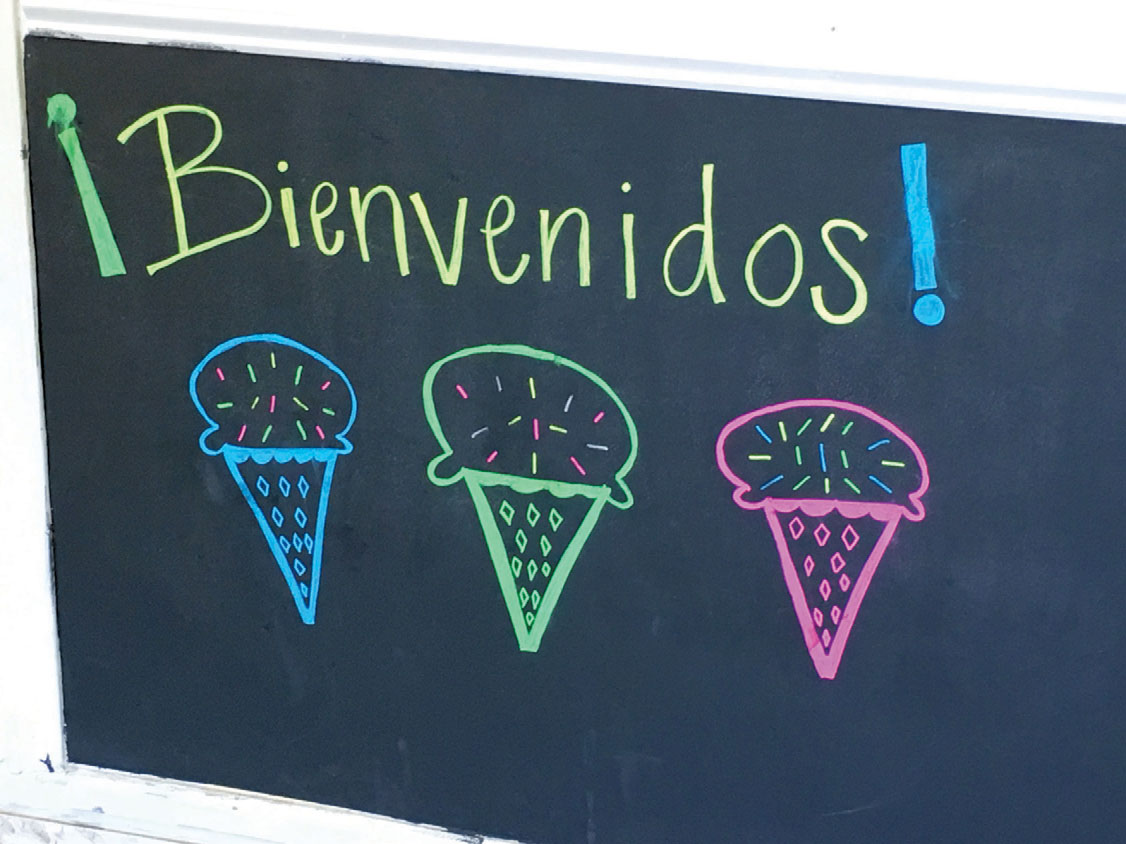The Politics of the Popsicle
Edible Essay
Musings on Mexican Paletas
It was a beauty of a day, all voluminous and cloud-tufted. The kind of warm sun your face involuntarily turns to seek. And I was heading home down the mountain after a good set of meetings in Hendersonville (one of which involved the publisher of the newly launched and oh-so-anticipated edible Asheville). Well ahead of schedule for afternoon carpool duty, I imagined my teenage middle schoolers mock-shock at Mommy’s surprise earlyness for pick up.
But then, I decided to make a stop. Actually a turn-around-and-go-back kind of stop. I had passed a paleteria, a particularly happy looking one on Spartanburg Highway in East Flat Rock, El Rio Ice Cream & Paleteria. It could have been the kind of warmth in the air that was a far off first hint of summer, whispering “You neeeeeeed a frozen treeeeeat …” More likely, it was a physical, Pavlovian response of mine to all of this build-awall talk on the political airwaves of late.
I knew what to expect walking into El Rio the first time. A toothy grin from the bilingual kid behind the counter, super alegre colorful decor, the upbeat, danceable Latin tune and some important choices to make: the creamy milk-based coco or something, anything with a little heat, a refreshing water-based cucumber con chile or the mango or sweet-sour tamarind rendition? We chatted amiably, he pointed me towards his Uncle Tony’s shop on Cedar Lane in Greenville for a more convenient fix, ever needed, and I departed, open sunroof, frozen pop in hand, happy.
I lived deep in the heart of Mexico for almost four years over a defining decade from single, new college grad to mother with toddlers in tow. I love the country, love the people. Half of my Facebook feed is filled up with those lasting relationships. While I am quite happy to live where I live, vote where I vote and spend my professional energies publishing a magazine that speaks exclusively with a pride of local place, I believe we Americans could take a page culturally when it comes to Mexican family life, community connectedness and, yes, without question, food. Definitely paletas. The original ice lolly, ice pop, popsicle, as it were.
There is, quite literally, a paleteria on most city blocks in any community you visit south of the border. Born from a culture of heat and succulent tropical abundance (mamey, chirimoya, soursop, guava factor in the average Mexican child’s palate, right alongside pineapple, banana, apple, strawberry), the ubiquitous La Michoacana brand has more than 15,000 paleteria outlets, 1,000 in Mexico City alone. Because I enjoy math, at 129 million or so citizens, that’s one for every 8,600 Mexicanos. (As a point of reference, there are on order of 16,000 McDonald’s in the US, factoring 323 million souls, that’s a name-brand hamburger joint every 20,000 or so.) We are talking about something as symbolic and essential to the foodways of a culture as it comes.
Now, I love a sweet tea-Meyer lemon-vermouth-y hipster pop, to be sure, however I love a paleta more. I recently watched Anthony Bourdain utter, “You know what’s something? To actually have the courage not to change.” Paletas are part of a food culture that has been around kinda forever, with flavors and techniques that don’t need improving, but preserving and protecting, food culture that supports, over centuries, season and a sense of place. With their not-Instagram-ready colors of soft brown, off white, muted pink and orange, the classic flavors of coconut, tamarind, mango-and-chile are gonna be there in any paleteria you find in this land—the history and cultural stamp too strong not to follow its people.
But then, we don’t exactly grow tamarind and coco in the Upstate of South Carolina now do we? And our mothers most likely did not teach us how to roll out sheets of pasta, or soak chickpeas for hummus either. And what about how the things we do grow here get from our farms to our tables? Those are warm hands and hearts there doing the picking and packing of those South Carolina peaches.
These are way complex times in the land of immigrants we live in, y’all. The answers to complex problems, I imagine, are not overly reductive. Sure, it’s important to be translatable and communicable to the laymen. But a blunt, reinforced, glorified physical barricade? I doubt it.
Build a wall? I say, find and enjoy a paleta first. Chat with the proprietor, hang together in our incredibly diverse community and let’s see where the problem-solving narrative (and airwaves) go.





